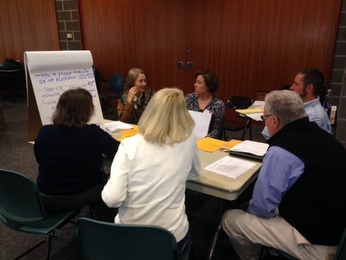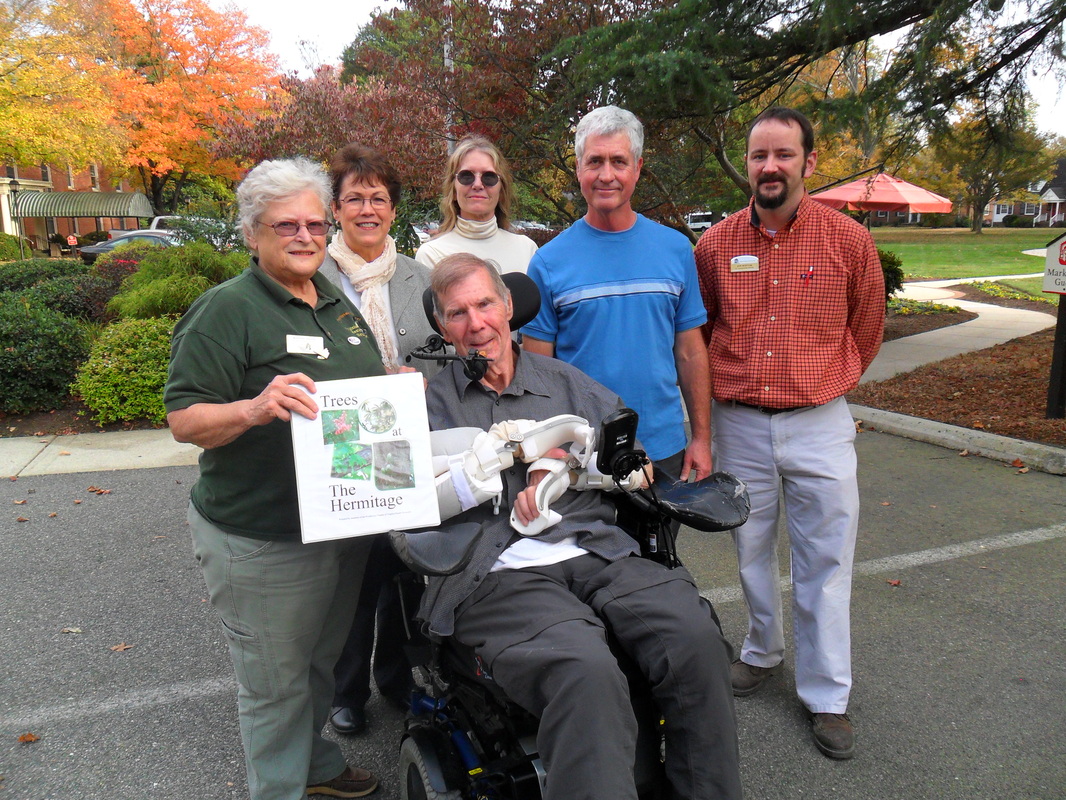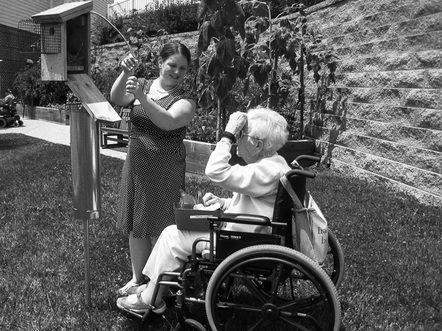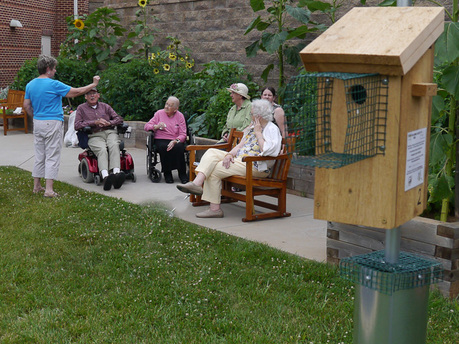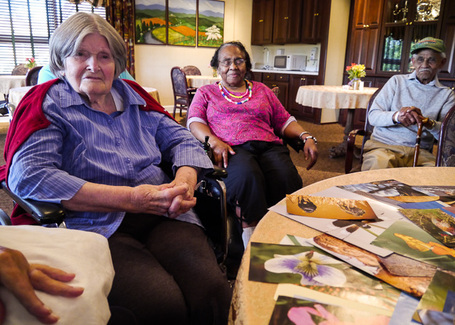Ongoing Old Rag Chapter Reconnect with Nature Projects
Vegetable Garden: ORMN member Cherri Lawson volunteered to lead development of the vegetable garden at Dogwood Village Senior Living, a request by the staff because they did not have gardening experience. Working with the Dogwood Village staff, she meets with residents on Mondays from 1-3 p.m. during the spring, summer, and fall. Several ORMN volunteers help Cherri with planting and garden maintenance. She tries to directly involve residents with personalized garden plots where they grow vegetables and also flowers. Weekly visits build an exciting and cooperative spirit in the garden, which has become a place to socialize. Residents pick their own produce to share with family members and other residents, and the staff prepares some of the veggies for the residents’ meals. The garden succeeded on all levels, and residents even entered their produce in the Orange County fair where a number of them won prizes: Buck Harris won Best in Show 1st Place for his perfect tomatoes; Jeanne Davis won Best in Show 1st Place for the tallest sunflower plant; Fred Miller won 1st Place Tomatoes, and others won prizes for chives, miniature roses, and marigolds.
Blue Bird Trail: Dana Squire, an ORMN volunteer and member of the Virginia Bluebird Society, determined that the nursing home grounds were appropriate for a five-box blue bird trail. Roger Temples (ORMN) built the boxes, and five members helped install them. The residents quickly noticed the boxes, and they enjoy watching them with binoculars from their rooms. They talk enthusiastically about sightings, and especially enjoy sighting newly-laid eggs and observing the birds fledge. Dana visits the facility weekly from March to November to maintain the bluebird trail. If capable and interested, residents can participate during the weekly visits.
Large-Group Presentations: Many members of ORMN offer large-group presentations to the residents, who enjoy the educational nature of the presentations and are often inspired to tell stories of their own experiences in nature from around the world. Examples of presentations include: What is Nature? (Connelly); Blue Birds in the Backyard (Temples); God’s Coloring Book (Price); Chestnut Blight and Restoration (Baker); A Hike Up Old Rag in Shenandoah National Park (Connelly); Exploration of a Coral Reef (Marshall); Wild Animals of Africa (Williams).
Small-Group Sessions: Usually twice a month, three members (Julie Connelly, Caroline Watts, and Jane Dalton) offer small-group sessions called “Adventures in Nature.” Many sessions involve passing around photographs to facilitate resident storytelling, and others include demonstrations using hands-on resources such as rocks (geology), fall leaves (pigmentation of leaves), local wildflowers and butterflies. The residents enjoy the educational intention of the presentations along with the opportunity to socialize.
One-on-One Visits: Some nursing home residents are not able to attend either large- or small-group sessions, so volunteers visit them in their rooms (Julie Connelly and Jane Dalton). The staff provides names of those interested in having personal visits. The volunteers found that sharing nature pictures encourages the residents to share recollections and tell stories that bring the joy they felt in the past into the present moment.
Healing Garden: Pam McMillie has been adding native plants, especially those that are nectar and host plants for butterflies, to a newly established garden at the facility. She also offers presentations to the residents about the plants, and she developed a plant identification map, which is useful both for residents and their families.
Nature Trivia: Gail Marshall offers a question-answer display board where she provides questions and interactive answers about many aspects of nature, e.g., native wildflower identification, coral reef creatures.
The Old Rag chapter’s Reconnect with Nature Project: Bringing Nature Home to Long-term Care demonstrates that Master Naturalists can play an important role in improving the quality of life for people who are confined to a long-term care facility. Living in an institution need not translate into being disconnected from the natural world. Other chapters might follow this example and develop similar projects of their own.
 Recent award to the VMN program from the
Recent award to the VMN program from the 
